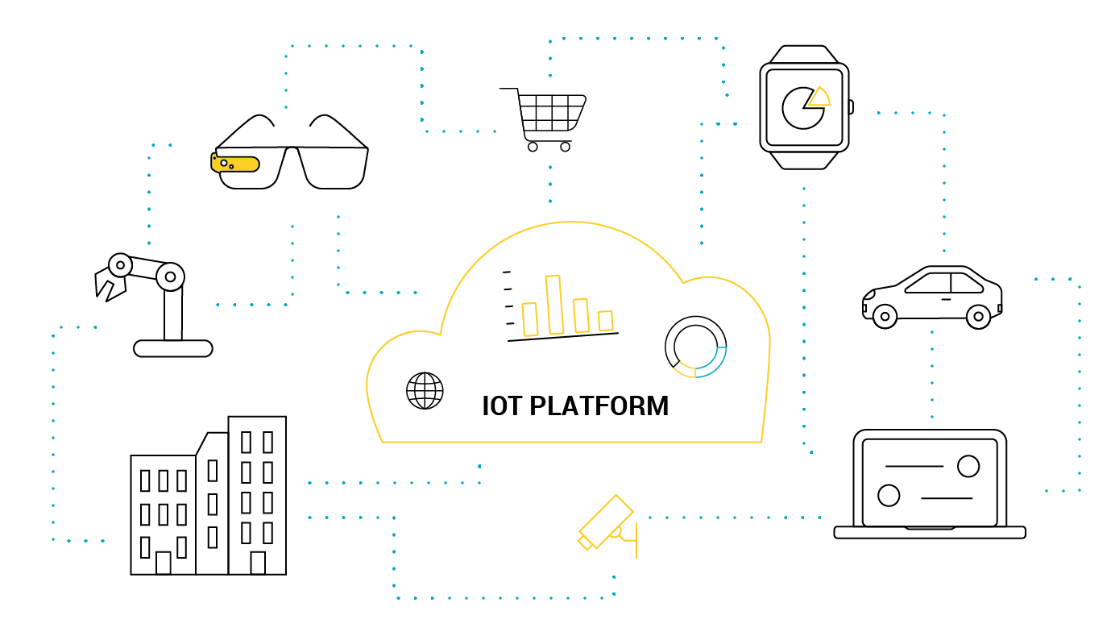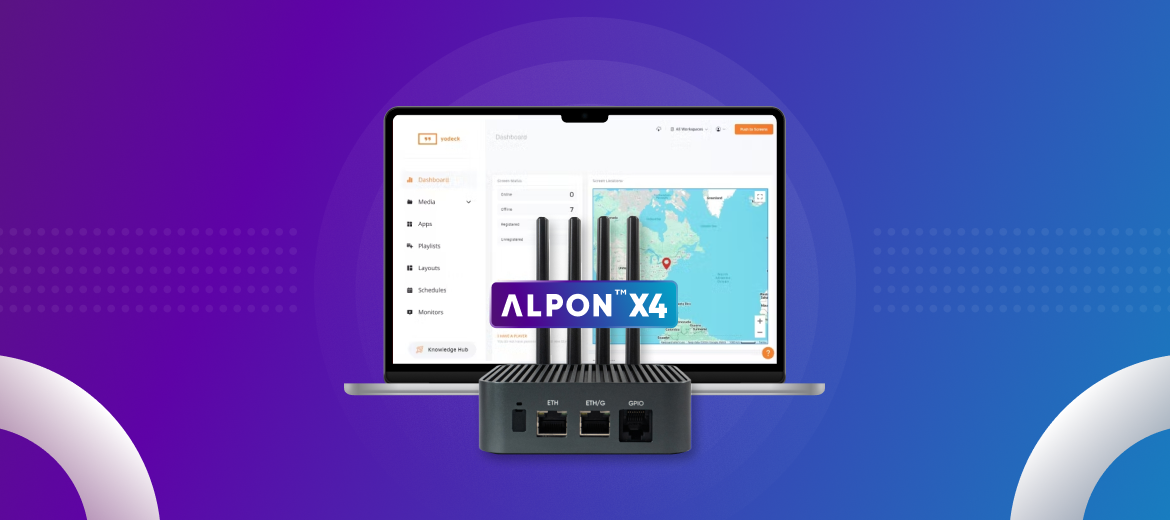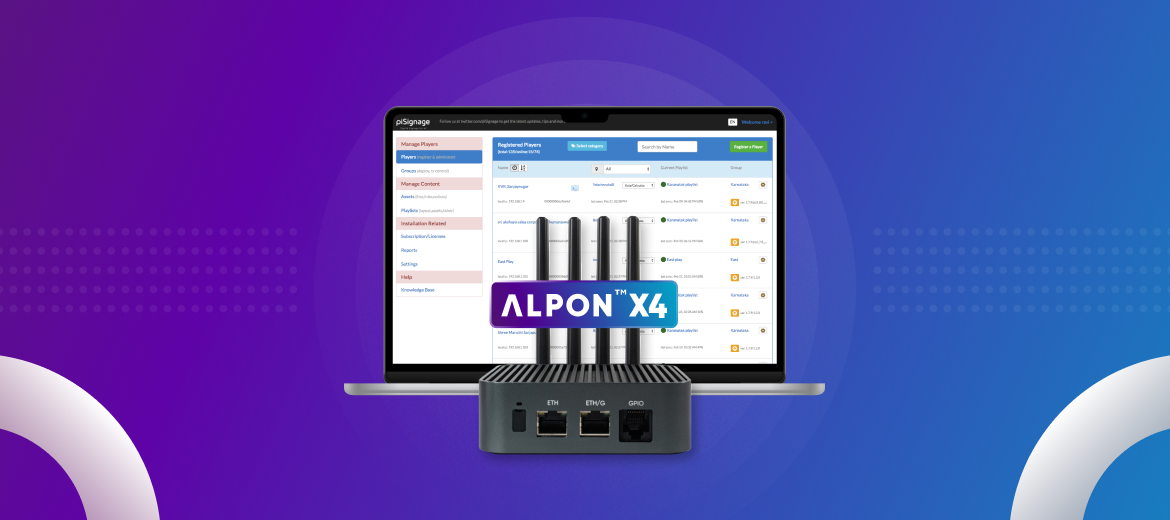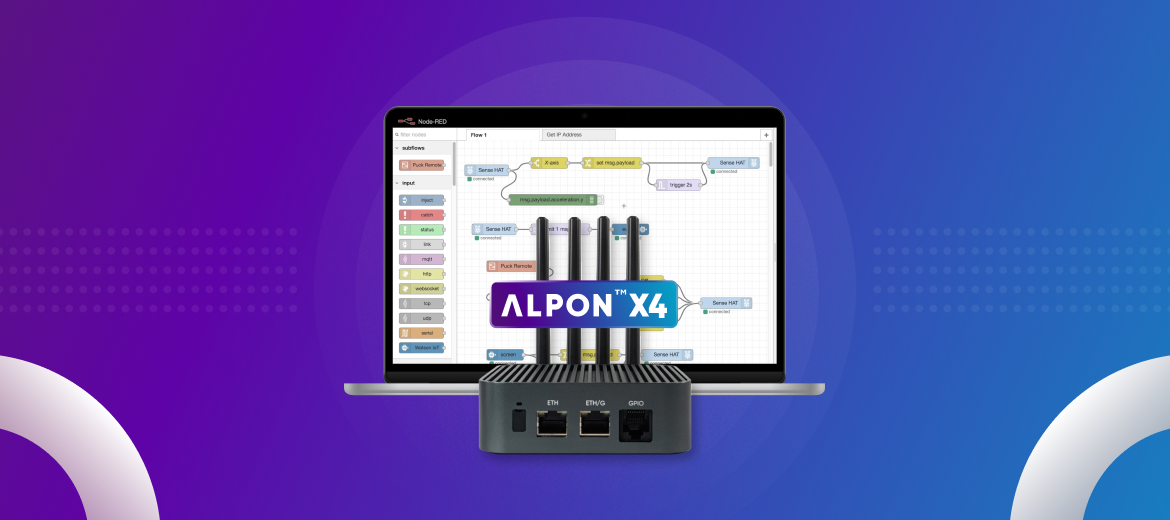The Internet of Things (IoT) is a concept that encompasses connected devices and sensors deployed in the field to collect data about people, objects, and processes. It started several years ago but has grown in popularity as a major trend in recent times. Today, there are plenty of options for deploying your next-generation IoT solution, but which one should you choose? This guide will help you make the right choice by comparing some of the best cloud platforms available today.
What is IoT?
IoT relates to the network of physical objects that are connected primarily through the use of sensors, software, and other similar technologies; these include computers, appliances, home electronics such as smart TVs or gaming consoles, but also cars. This connection gives access to an enormous amount of information which can then be used for business purposes – though there’s no limit in what you could do with it!
IoT Architecture
IoT architecture is a combination of different types of devices and connectivity with an underlying objective for scaling, reduced management costs and automatic collection of data. This type of architecture enables device data to be collected, stored and analyzed in real time through sensors which also allow for detection of unusual behavior or construction delays by remote sensor readings before entering active mode. The IoT system architecture consists of four layers – the physical layer responsible for connecting devices together, the data link layer which handles communication between devices, the network layer which collects device information and transmits it to controllers/service providers and finally, the transport layer which manages sending messages over various networks.
What is an IoT Platform and Why is It Necessary?
IoT is becoming an ever-increasingly significant aspect of modern life, especially for businesses. With more than half of all companies already incorporating IoT in some shape or form, yet many not having the proper tools to manage it entirely; there exists a definite need for improved management. This is where an IoT platform—something which helps monitor and control your company’s IoT setup—comes into play: giving you centralized access to your company’s otherwise disparate devices. An IoT platform connects through collecting data from the physical world, storing it internally and making it accessible outside through APIs—allowing external apps such as analytics software to access this data without issue.
There are several benefits that come with an IoT strategy including
- Convenience: more data means more insights
- Scalability as your business grows
- Availability via cloud-based solutions that can be accessed from anywhere/anytime
- An open API ecosystem for third-party development/integration
- Advanced analytics for better decision-making
- Automated and intelligent processes creating streamlined workflows
As IoT becomes more widespread, we’ll see an increase in the number of people using cloud-based platforms – these are powerful tools that provide companies with help managing their own IoT projects and services.
Types of IoT Platforms
Cloud-based IoT platforms
Cloud-based IoT platforms are the most common type of IoT platform and they are also the most flexible. They provide users with access to a central location where they can store their data, manage device configurations and collaborate with other users. Cloud-based IoT platforms also allow users to perform tasks such as monitoring, analyzing and managing devices remotely.
Embedded IoT platforms
Embedded IoT platforms are similar to cloud-based IoT platforms but they use microcontrollers or microprocessors instead of the cloud. Embedded systems usually have limited resources and cannot handle complex algorithms like those found in cloud-based IoT platforms. The main difference between embedded systems and cloud-based ones is that embedded systems typically run on dedicated hardware or software that does not require any additional resources to function properly.
Hybrid IoT platforms
Hybrid IoT platforms are a combination of both cloud-based and embedded technologies. This allows businesses to take advantage of the best features from both worlds without having to pay for multiple products or services separately.
Why Is It Important to Get a Good IoT Cloud Service?
In the case of many IoT-driven enterprises today, the choice seems straightforward: invest in costly, vulnerable, and hardly scalable on-site servers or choose an IoT Cloud-based solution that allows for cost savings while presenting no significant tradeoffs in platform functionality. At times, an on-premises IoT infrastructure will incur costs that might push the entire project over budget. Things have changed drastically now that cloud deployment has been established. So, what are some characteristics that would make an IoT Cloud Platform work well for various industries’ needs across different scenarios?
Scalability: Cloud platforms allow users to scale up or down depending on their needs at any point in time. This feature helps companies increase profits by reducing costs when they don’t need as many resources and by increasing profits when they need more resources than usual.
Data Mobility: Cloud platforms support multiple operating systems, which means data can be moved from one device to another easily without any loss of information or functionality.
Time to Market: Cloud platforms reduce the amount of time needed for development, testing, and deployment. This is beneficial for companies that want to get their products into the hands of consumers quickly without having to invest too much money upfront in development costs or hiring extra employees for each new project.
Security: Companies can rest easy knowing that their data is safe from cyber-attacks because it’s stored on a secure server that’s protected by firewalls as well as other security measures like encryption and malware.
When looking at all of the considerations – from price and scalability, to security – it becomes increasingly apparent that selecting an appropriate provider comes down to a few key traits. With those in mind, here is some information about what makes for good providers in general: great customer support and a large network of partners.
Most Popular IoT Cloud Platforms
To help you decide which Internet of Things platform to use for your project, we’ve compiled a list of the most popular Internet of Things platforms for this year, along with detailed descriptions of each one.
| IoT Cloud Platforms | ||
| What it is | What you can do with it | |
Google Cloud Platform(Google Cloud IoT Core is being retired on August 16, 2023) | Google Cloud Platform (GCP) is a managed cloud platform that helps you build connected devices and applications. It offers a fully managed service that connects, monitors, and analyzes your devices so you can manage them from one location.Google Cloud IoT is built on top of Google’s machine learning algorithms to automatically detect changes in your network by analyzing data from devices connected through Wi-Fi or Bluetooth to the Internet. This allows for immediate action when there are issues with connectivity or performance, so you don’t have to spend time troubleshooting every day—allowing you more time to focus on building valuable products or services instead. | – Manage and store data in the cloud – Use any language or platform to build applications – Integrate with Google products like Gmail, Search, and YouTube – Run applications on top of Google’s infrastructure |
Microsoft Azure | Microsoft Azure IoT Platform is a complete cloud services stack designed to enhance any IoT application and make it easier to build, scale and secure IoT solutions. Built on a foundation of Microsoft’s best-in-class technologies and services, the service enables developers to quickly develop hybrid solutions between the cloud and their hardware. It includes Linux, IoT Edge devices, RFID, and more support.Microsoft Azure IoT Platform integrates the power of machine-to-machine (M2M) with the intelligence, analytics, and control of the cloud to accelerate your value from the Internet of Things. The platform enables developers to rapidly build intelligent, connected devices that can control things like lighting and security while learning from users.Microsoft Azure IoT Platform can be used to Connect devices, analyze data, and automate processes with secure, scalable, and open edge-to-cloud solutions. | – Connect devices to Azure IoT Hub or a local gateway device – Create device policies and resources for your IoT solution – Use Azure Machine Learning to build models that can predict outcomes from sensor data or make recommendations based on historical data – Analyze your data using Microsoft Power BI, Azure HDInsight, or Azure SQL DB |
Amazon Web Services (AWS) | AWS is a cloud computing platform that offers a suite of services, including computing, storage, networking, database, and analytics. It provides a number of services that enable developers to create, build and run applications and services on the internet in different industries, including healthcare, retail, business management, education, and entertainment. AWS is a suite of technology infrastructure services that makes it easy for you to store, process, and serve your information from any device. AWS IoT helps you build connected devices that require real-time data. | – REST APIs for device and application management – Device connectivity, including both cloud-based and on-premises devices – Data analytics with AWS Machine Learning, which is built into the platform as part of a set of powerful machine learning services – IoT Edge deployments with AWS Lambda, which is designed to handle edge processing tasks in a variety of ways, including using AWS Greengrass for secure edge computing |
Cisco | Cisco IoT Services are designed to simplify and streamline your business by delivering the right devices, software, and services to create great customer experiences, automate workflow and increase productivity. Cisco software helps you transform your connected devices into intelligent assets that, in turn, can produce better business outcomes.Cisco IoT Solutions gather data generated from industrial applications, including connected machines and sensors, and transfer it to the cloud using the Internet of Things (IoT). Cisco TAC tracks problem reports, features, and availability of its various IoT devices. The mobile app shows you a list of available devices, while a separate tool allows you to perform remote troubleshooting or firmware upgrades on your IoT devices. | – Tools for designing and managing IoT applications – Device management capabilities for cloud-connected devices – Security features for protecting connected devices from cyberattacks |
Oracle | Oracle IoT Cloud Services provide a secure and cost-effective way to enable the rapid development of connected applications and solutions. Oracle IoT Cloud Services enable you to realize your business objectives through application development, management, and data analytics by leveraging Oracle’s global data center footprint, a combination of trusted hardware, secure management, and intuitive services.Oracle IoT Cloud Services include Business Support and Elastic IoT Cloud, which enable you to easily define, build and manage a scalable IoT solution through existing enterprise infrastructure, investments in the field of IoT, and usage of open-source software. | – A pre-built application template with a variety of connected device types – A marketplace where you can search for connected devices that meet your needs and buy them directly from manufacturers – A developer community with over 100,000 members who share their knowledge and expertise online |
IBM Watson | IBM Watson IoT platform is an open-source software application for the Internet of Things (IoT) devices. It has been developed by IBM and is available under an open-source license.IBM Watson IoT platform allows users to build applications for connected devices, analyze data from these devices and build business applications that use the data from these devices.The IBM Watson IoT platform provides real-time data exchange, secure communication, and data sensor and weather data services. It can handle massive amounts of data and provides better customer service.The IBM Watson IoT platform is used for building enterprise applications for smart cities, manufacturing, retail, and other industries. | – Provides an open container architecture for easy workload migration to the cloud. – Builds, modernize, and seamlessly connects devices to cloud-based applications. – Analyzes unstructured data and comprehends patterns in data to extract valuable insights – Open, lightweight MQTT or HTTP. – Provides highly-secure APIs to connect your apps with data from your devices. |
ThingWorx | The ThingWorx IoT platform is a cloud-based platform that helps companies to embed IoT devices into their products. It’s a great solution for improving the security and performance of your enterprise systems.The ThingWorx IoT platform has some impressive features. One of them is its ability to help you manage your IoT devices from one centralized location. You can also use it to create intelligent applications that can automate tasks and make your business more efficient.ThingWorx also offers some powerful analytics tools that can help you understand how your business is performing, including: | – Real-time Pattern & Anomaly Detection – Predictive Analytics – Simulations – Recommendations Based on Context |
Salesforce | Salesforce IoT Cloud is the platform for connecting your connected devices to Salesforce. It’s a cloud-based service that connects your existing applications to Salesforce, allowing you to take advantage of the powerful analytics and marketing capabilities of Salesforce.Salesforce IoT Cloud is an extension of Salesforce CRM and can be used in conjunction with any other application on the platform. Using this extension, you can build new apps that connect with data from multiple sources and have those apps work seamlessly with existing applications on your company’s Salesforce account. | – Customer, product, and CRM integration is complete. – A simple point-and-click UI eliminates the need for programming skills to create rules, conditions, and events. – Compatibility with other websites, services, and products. – An anticipatory approach to customer issues and needs. |
SAP | SAP IoT platform is a cloud-based software solution that enables you to connect, manage, and analyze data from your connected devices. The platform offers a range of services for different needs, such as analytics, device and network management, real-time monitoring, and remote control. With the SAP IoT platform, you can easily connect all kinds of devices from different manufacturers in one place. You can then use this data to create new business models and processes or improve existing ones.The SAP IoT platform collects and processes sensor data at scale at the edge or in the cloud, and then stores it on the SAP BTP for use by other applications. Furthermore, the Internet of Things Service offers a multi-tenant architecture that enables role-based access to device data via simple APIs. | – Building AI apps with IoT data – Dependable message processing – Secure data management – Simple IoT protocol integration with legacy systems, and so on. |
Hybrid IoT Platforms
Particle, Blues Wireless and Sixfab are three hybrid IoT platforms that develop, manufacture and distribute IoT devices & software. Sixfab offers a unique and comprehensive connectivity platform for Raspberry Pi, along with exceptional design and manufacturing solutions. Particle, on the other hand, has built a thriving ecosystem that empowers developers to create innovative and engaging user experiences. Blues Wireless, a company similar to Particle, offers a comprehensive IoT platform and has recently introduced a new product line. These IoT platforms that stand out in their own ways. Each has a unique perspective on the strengths of IoT technology. By examining their features and strategies, we can create a roadmap to reach your own objectives for using IoT technology in your business.
| Hybrid IoT Platforms | ||
| What it is | What you can do with it | |
Particle | Particle is an easy-to-use IoT Platform for building IoT products, services, and applications. It’s a full-stack solution that combines hardware development with cloud services and analytics to enable developers to focus on their core competencies.The Particle IoT Platform manages all the complexity of connecting device data to the cloud, so you can focus on building your product or service.It has been designed from the ground up with security in mind and can connect any device – from simple sensors to complex devices like robots – over Wi-Fi or cellular networks. | – It will provide a dependable infrastructure.REST API can be used to integrate data with anything. – It offers a one-stop shop for hardware, software, and connectivity. – There will be no need to invest time in integration again. |
Blues Wireless | Blues Wireless is a global wireless connectivity solution Platform to simplify the process of gathering and moving sensor data from your device or product to your cloud. The Blues Wireless platform provides an easy way to connect devices, sensors, and other data sources from any location on earth. Blues Wireless simplifies the process of gathering and moving sensor data from your device or product to your cloud, so you can focus on what matters most: making your business work better. | – Turnkey hardware connectivity and cloud services, which helps to accelerate the IoT journey. – Industry-standard encryption for data in transit and at rest. |
Sixfab | Sixfab develops connectivity hardware and software for the Internet of Things (IoT), providing a hassle-free cellular connection to your Raspberry Pi based devices, allowing you to manage the different components involved – hardware, operating systems, network protocols, and more. With the Sixfab user-friendly and easy-to-use products, customers can build their own Raspberry Pi based devices without extensive knowledge. Sixfab is a certified Raspberry Pi Design Partner, collaborating with the Raspberry Pi on developing custom IoT devices and projects. | – Comprehensive cellular connectivity solutions for Raspberry Pi. – Global coverage with 400+ networks in 180+ countries. – Provides a one-stop-shop for all cellular hardware, software, and connectivity needs. – New 5G solutions |
Need to learn more about IoT development platforms?
Let’s talk.



